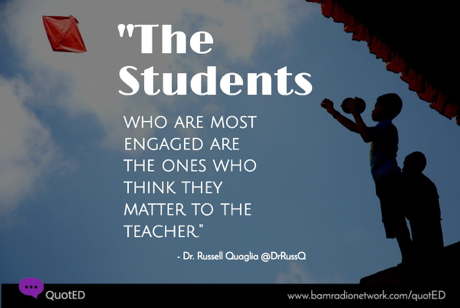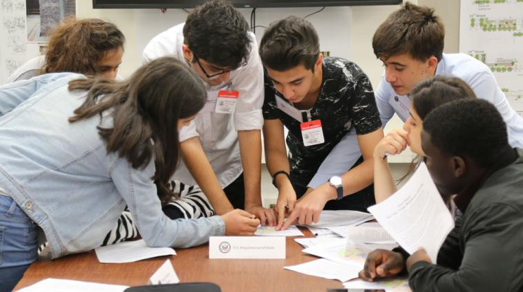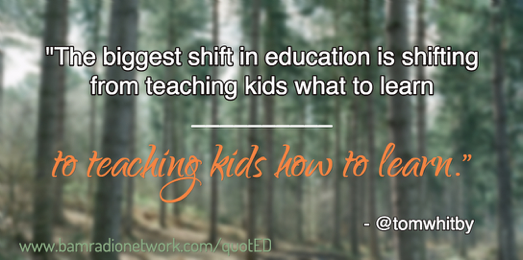Okay, I will admit it…I was the administrator that was “tough”. I refused to settle for anything but the best. Our kids deserve it!
Although being “tough” I thoroughly believe that the discussions I had with my teachers during pre and post observation conferences not only transformed their teaching, but made a difference in students’ educational careers.
One of the components to the “Danielson Framework” which I always discussed was student engagement. Many times teachers mistook student compliance for engagement; however, compliance is not engagement. I spent many post-observation conferences discussing the difference between the two.
 Compliant engagement is easy, if you have clear, consistent classroom management techniques, one could easily mistake compliance for engagement. The “SLANT” method, Sit up, Lean forward, Ask and answers questions, Nod your head and Track the speaker, has its place in education but reaps the students of true authentic learning.
Compliant engagement is easy, if you have clear, consistent classroom management techniques, one could easily mistake compliance for engagement. The “SLANT” method, Sit up, Lean forward, Ask and answers questions, Nod your head and Track the speaker, has its place in education but reaps the students of true authentic learning.
Just because a student is on task does not mean he/she is engaged in their learning. If we call on a student and he/she gets the correct answer that doesn’t ensure engagement either, it means they were paying attention.
So what is engaged learning and how do you achieve it in your classroom?
Student engagement involves students’ curiosity, passion, and interest they show when they are learning. This type of active learning extents past the level of motivation to learn so that they can progress to the next grade, student are intrinsically motivated and invested in what they are working on.
 In order for students to be truly engaged, educators need to create the environment which supports and encourages inquisitiveness, self-discovery, and one which is safe for all students to take risks – it’s all about relationships!
In order for students to be truly engaged, educators need to create the environment which supports and encourages inquisitiveness, self-discovery, and one which is safe for all students to take risks – it’s all about relationships!
Students need to be allowed to self-select and choose how they show mastery of the standards. When students feel supported and a part of the decision making process they feel empowered to take risks and dig deeper into the content as they push themselves as learners which is why goal setting with students is so valuable. Many times in a classroom which focuses on engaged learning, students and teachers are learning in tandem, the teacher is no longer the only expert in the room, each student is an expert we can learn from!
 Inquiry based learning promotes engaged learning at the core! One colleague I have learned the most from throughout my career was a master at inquiry based learning. She would find the perfect video, song, picture, article, etc. and present it to her students with such self-curiosity and wonder that students were naturally drawn to it as well. Students would collaboratively or independently generate questions, hypothesis, and feelings about what was presented, then, given time and resources to research their topics. Upon initial observation, one might think that there was chaos in the room, not engagement. It was often loud and messy in this classroom, there were materials everywhere and kids were constantly talking to one another. However, if you took the time to really watch and listen almost every student was on task discussing and researching.
Inquiry based learning promotes engaged learning at the core! One colleague I have learned the most from throughout my career was a master at inquiry based learning. She would find the perfect video, song, picture, article, etc. and present it to her students with such self-curiosity and wonder that students were naturally drawn to it as well. Students would collaboratively or independently generate questions, hypothesis, and feelings about what was presented, then, given time and resources to research their topics. Upon initial observation, one might think that there was chaos in the room, not engagement. It was often loud and messy in this classroom, there were materials everywhere and kids were constantly talking to one another. However, if you took the time to really watch and listen almost every student was on task discussing and researching.
Engaged learning is messy and can, at times, make us question if students will be able to raise to the occasion and “master” the concept/skill being taught. However, what continues to be true in education is when we set the bar high for students they will raise to the occasion with the proper support and encouragement.
So, as I ended many post observation meetings, “Compliance is not a bad thing to have in your classroom. In life there are times we must all be compliant; however, if we fail to engage students in their learning we reap them the ability to create, collaborate, and inspire.”

Katie Algrim – Director of Innovative Professional Learning
(t):630-444-3044
(c):630-675-4447
(e):kalgrim@kaneroe.org
